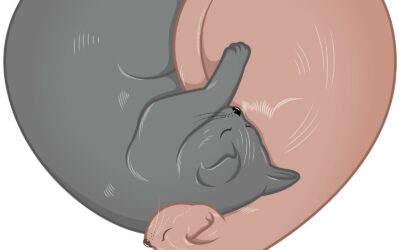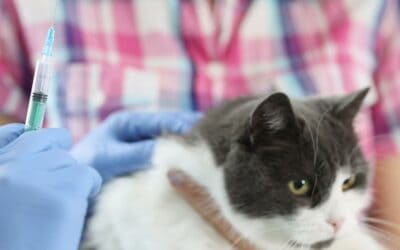* This info has been shared with from another organization to help cats be reunited with their owners as fast as possible. We did not write this – we are sharing this with you. Author unknown to us.
Grab a cuppa, read this and go in calm as you search for your cat.
Finding A Lost Cat – Understanding How
Often indoors cats end up escaping from their homes. A critical tip that most pet owners fail to follow is IMMEDIATELY SET A TRAP.
Please note: not because the cat can’t be seen, its not around or far from its surroundings and environments
LOST CAT BEHAVIOUR AND RECOVERY TIPS
The disappearance of an outdoor-access cat means that something has happened to interrupt that cat’s behaviors of coming home whereas indoor-only cats that escape outdoors typically hide in silence near their escape point. Thus, the methods that should be used to search for a missing outdoor-access cat are very different from the methods that should be used to recover an indoor-only cat that has escaped doors. Understanding the following behaviors and taking appropriate action will increase the chances that you will recover your cat.
Outdoor-Access Cats
Cats are territorial. When an outdoor-access cat suddenly vanishes, it means that something has happened to that cat to interrupt its normal behaviour of coming home. The disappearance could mean that the cat is injured, trapped, or deceased within its territory. Or perhaps the cat was transported out of the area—either intentionally (by an irate neighbour who trapped the cat) or unintentionally (by the cat climbing into an opened parked van). Possibly the cat was displaced into unfamiliar territory—something as simple as being chased by a dog several houses away but in an area that the cat is not familiar with, causing it to panic and hide in silence. The investigative question when an outdoor-access cat disappears is: What happened to the cat?
Indoor-Only Cats
The territory for an indoor-only cat is the inside of the home where it lives. When an indoor-only cat escapes outdoors, it is “displaced” into unfamiliar territory. Usually, they will look for the first place that will offer concealment and protection. Their instinctive response is to hide in silence because that is their primary protection from predators. How long they remain in that hiding place and what they do from there is dependent upon their temperament. The investigative question when an indoor-only cat escapes outdoors is: Where is the cat hiding?
Feline Temperaments that Influence Distances Travelled
Temperament influences actions. How a cat behaves when in its normal territory will influence how it behaves when it becomes “lost” or displaced into unfamiliar territory. In addition to posting flyers and checking the cages of local shelters, encourage cat owners to develop a search strategy based on the specific behaviors of their cat.
Here are guidelines to use:
Curious/clown cat – These are gregarious cats that get into trouble easily, run to the door to greet a stranger, and are not easily afraid of anything. When displaced, these cats might initially hide but then they will most likely travel. Strategy for recovery should be to place florescent posters within at least a five-block radius. Also, interview neighbours in a door-to-door search, thoroughly searching possible hiding places in yards of houses and other areas within a close proximity to the escape point. Do not assume that the cat will come when you call!
Care-less cat – These aloof cats don’t seem to care much about people. When a stranger comes in, they stand back and watch. When displaced they will likely initially hide, but eventually they will break cover and come back to the door, meow, or possibly travel. Strategy should be to search hiding places nearby, interview neighbor’s door-to-door and search their yards. If these efforts do not produce results, consider setting a baited humane trap.
Cautious cat – These cats are generally stable, but they show occasional shyness. They like people but when a stranger comes to the door, they dart and hide. Some of these cats’ peek around the corner and eventually come out to investigate. When displaced, they will likely immediately hide in fear. If not pushed (scared off) from their hiding place, they will typically return to the point where they escaped from or they will meow when the owner comes to look for them. This behavior typically is observed either within the first two days (after the cat has built up confidence) or not until seven to ten days later when their hunger or thirst has reached a point where they will respond. Strategy would be to conduct a tightly focused search in neighbors’ yards and to set baited humane traps.
Catatonic/xenophobic Cat – Xenophobia means “fear or hatred of things strange or foreign.” Xenophobic cats are afraid of everything that is new or unfamiliar. Their fearful behavior is hardwired into their character; it is caused by genetics and/or kittenhood experiences (nature or nurture). These cats will hide when a stranger comes into their home, and they typically will not come out until well after the company has left. They do not do well with human contact (being held, petted, etc.) and they are easily disturbed by any change in their environment. When displaced, they bolt and then hide in silence. They tend to remain in the same hiding place and become almost catatonic, immobilized with fear. If they are found by someone other than their owners, they are typically mistaken as being untamed or “feral.” The primary strategy to recover these cats would be to set baited humane traps. Xenophobic cats that become “lost” are routinely absorbed into the feral cat population.
Owner Behaviors that Create Problems
Cat owners often behave in ways that can inhibit their chances of finding their lost cat. They develop “tunnel vision” and fail to find their cat because they focus on wrong theories. They experience “grief avoidance” and quickly give up their search effort. They feel helpless and alone, often discouraged by others who rebuke them and tell them “It was just a cat” and “you’ll never find your cat.” But one of the biggest problems is that cat owners typically focus their search efforts by posting lost cat flyers and by searching the cages at the local shelter. Although these techniques are important and should not be overlooked, the primary technique to recover a missing cat should be to obtain permission from all neighbours to enter their yards and conduct an aggressive, physical search for the missing cat (and to set baited humane traps there when necessary). Simply asking a neighbour to look for the lost cat is not sufficient! Neighbours are not going to crawl around on their bellies under their decks or houses to search for someone else’s lost cat!
Rescuer Behaviours that Create Problems
One of the most tragic misinterpretations of feline behaviour occurs when rescuers observe a cat with a xenophobic temperament and assume, based on the fearful behaviour, that the cat is an untamed “feral.” While it is true that feral, untamed cats that are unaccustomed to human contact will hiss, spit, twirl, lunge, and urinate when humanely trapped, this “wild animal” behaviour is also common in cats who have xenophobic temperaments! We know this because we have talked to owners of lost xenophobic cats that had to be humanely trapped in order to be recovered; the owners verified that their cats exhibited wild behaviour while in the humane trap. These behaviours reflect a fearful temperament, not a lack of tameness. Shelter and TNR workers should scan all “feral” cats for microchips and conduct research (check classifieds, lost cat reports, etc.) to determine if the new “feral” is actually someone’s xenophobic pet cat that escaped outdoors, perhaps several weeks or months before it was found.
Our Go To Tips
- Social media the hell out of it but do not respond to negative feed back, you have enough going on.
- Leave bedding out, litter box if they have a used one.
- Drag their bedding or item of your clothing down and back 5 doors or so to leave a scent trail. Handy after rain.
- Do not leave food out unless it is in a trap.
- Letterbox drop frequently
- Get to know the people living around you. Kids are great eyes to have on this. Ask if you can check their yards but do not expect them to be as concerned as you.
- Visit the shelter in person. Reception staff do not have a visual of every animal that comes in. If you call them be polite & understand their desk is not likely in the area an incoming animal passes by.
- Update / alert microchip company your cat is missing
- NEVER GIVE UP
Do not assume your cat did not end up in a vehicle & in another suburb
Cats are active dusk till dawn so be prepared for searching then & look upward as well as down! Trees, drains, between buildings. On rooftops etc. Ears & eyes peeled.
Focus & keep your energy calm



















0 Comments